
About Tea Mosquito bug:
- It is also known by the name Helopeltis theivora.
- It is considered to be a serious pest of tea which damage more in most shaded areas.
- The nymphs and adults of the Tea Mosquito Bug(TMB) suck the sap from tender leaves, buds and young shoots, which results in heavy crop losses.
- After the formation of the PPC (Plant Protection Code) of the Tea Board of India in 2014 many pesticides were removed from the approved list of PPC to produce Indian tea safe and free from any harmful pesticides.
- Currently, in the recent PPC version of 14, only seven pesticides are approved for use in South India.
Key Facts about Tea Cultivation
- It is grown in tropical and sub-tropical climates
- Soil: It requires deep and fertile well-drained soil, rich in humus and organic matter.
- Tea bushes require a warm and moist frost-free climate all through the year.
- Temperature: It requires 20°-30°C for its growth.
- Rainfall: It needs 150-300 cm annual rainfall.
- Major tea-producing states: Assam, West Bengal, Tamil Nadu and Kerala, Himachal Pradesh, Uttarakhand, Meghalaya, Andhra Pradesh and Tripura.
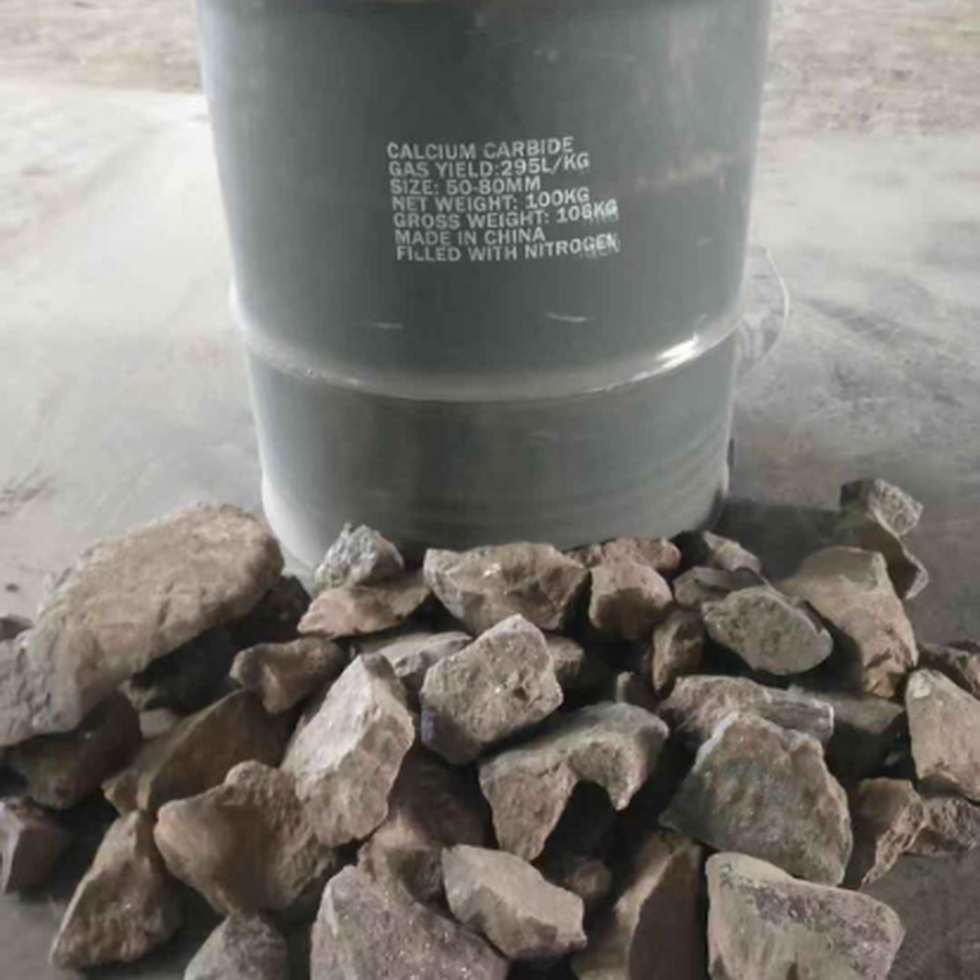
About Calcium Carbide:
- It is a compound with the chemical formula CaC2.
- It is also known as ‘masala’ which is used as a fruit ripening agent.
- It is manufactured by heating a lime and carbon mixture to 2000 to 2100°C (3632 to 3812°F) in an electric arc furnace.
- It has been prohibited as per the provision in the sub-regulation of Food Safety and Standards (Prohibition and Restriction on Sales) Regulation, 2011.
- It is used in mining and metal industries as well as in the production of acetylene gas.
- It is a highly reactive compound and releases acetylene gas which is used to artificially ripen fruits
What is Artificial ripening?
- Artificial ripening of fruits is done in a controlled manner to achieve the optimum level of ripening before time which would be then accepted by consumers
- It also allows a longer shelf life for these fruits.
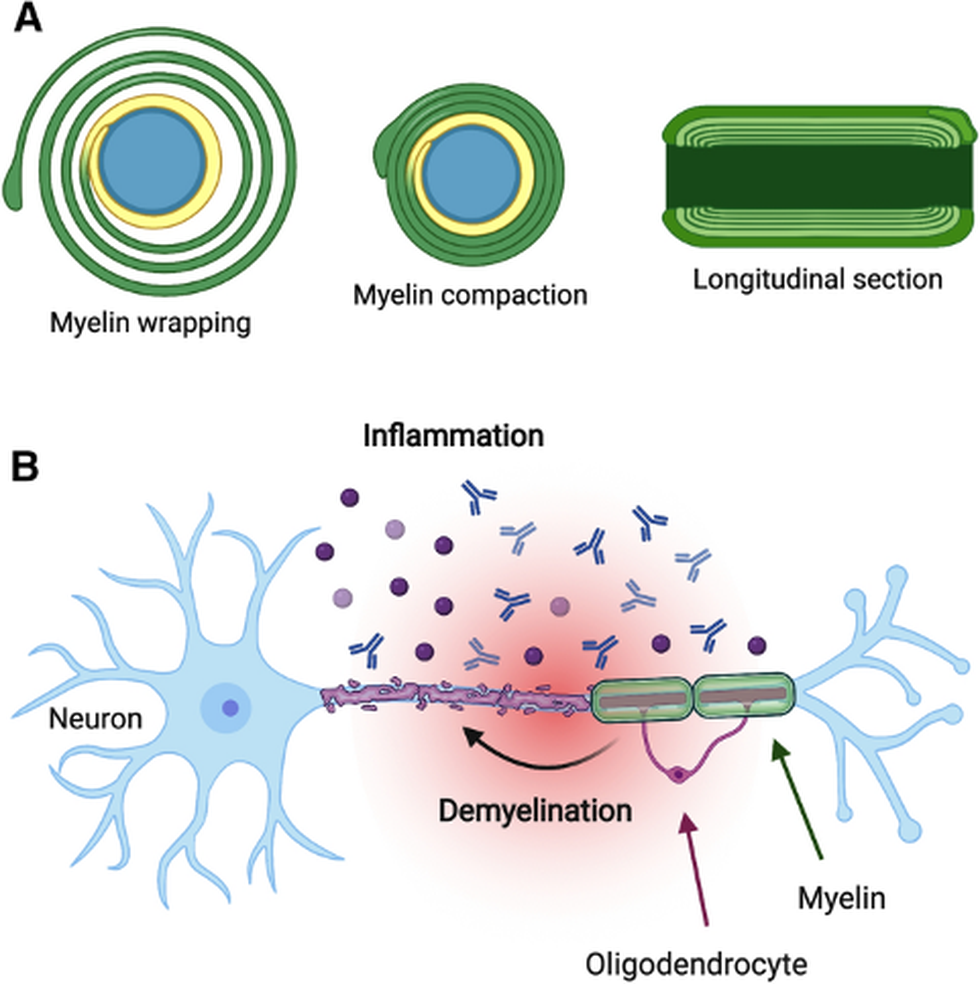
About Myelin Basic Protein:
- It is a major protein component of the myelin sheath, which is a protective membrane that wraps around the axon of nerve cells.
- It insulates and protects nerve fibres in the central nervous system.
- It acts as a model protein in studying diseases like multiple sclerosis
- The researchers used a technique called the Langmuir-Blodgett (LB) technique to form monolayers of pure myelin basic protein at the air-water and air-solid interfaces.
What is multiple sclerosis?
- It is a disease that impacts the brain, spinal cord and optic nerves.
- It is considered to be an immune-mediated disease. This means that in MS, the body's immune system attacks the central nervous system.
- Symptoms: Vision problems, Loss of balance or coordination, Muscle weakness etc.
4. Food Safety and Compliance System (FOSCOS)
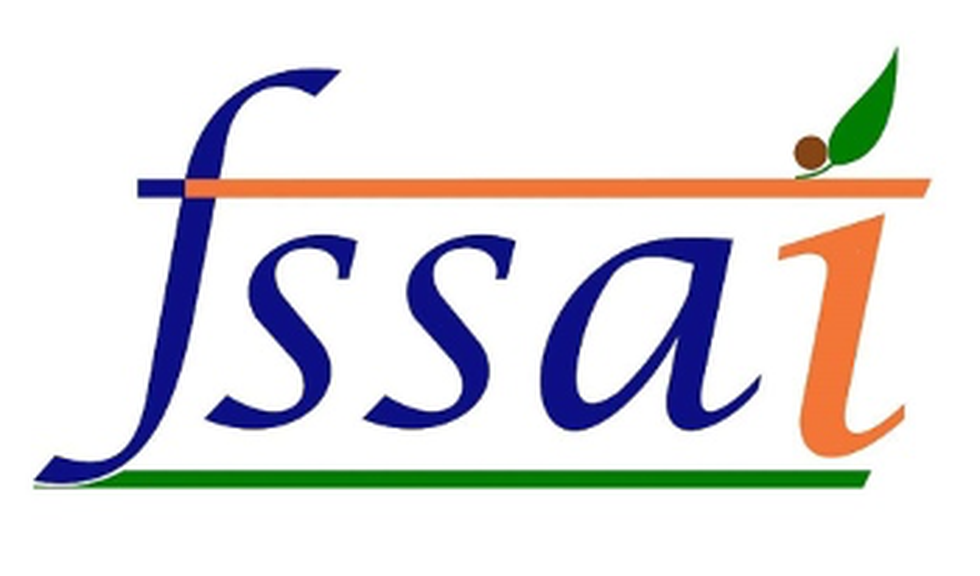
About Food Safety and Compliance System:
- It is an enhanced version of the Food Licensing and Registration System (FLRS) which was launched in 2012 for the issuance of pan-India FSSAI Licenses and Registration.
- It is a comprehensive system for registration and licensing for Food Business Operators (FBOs).
- It is a one-point stop for FBOs for their interface with the food safety regulator for all types of compliances.
Key facts about the Food Safety and Standards Authority of India (FSSAI)
- It is a statutory body established under the Food Safety and Standards Act, 2006 (FSS Act).
- FSS Act, of 2006 consolidated various acts & orders that had earlier handled food-related issues in various Ministries and Departments.
- Nodal ministry:Ministry of Health & Family Welfare.
- Some of the Initiatives of FSSAI
- Heart Attack Rewind: It was launched for the elimination of industrially produced trans-fat in the food supply.
- It will support FSSAI‟s global target of eliminating trans-fat in India by the year 2022.
- Eat Right India movement: It is an initiative to transform the country’s food system to ensure safe, healthy and sustainable food for all Indians.
5. What is Abhilekh Patal?
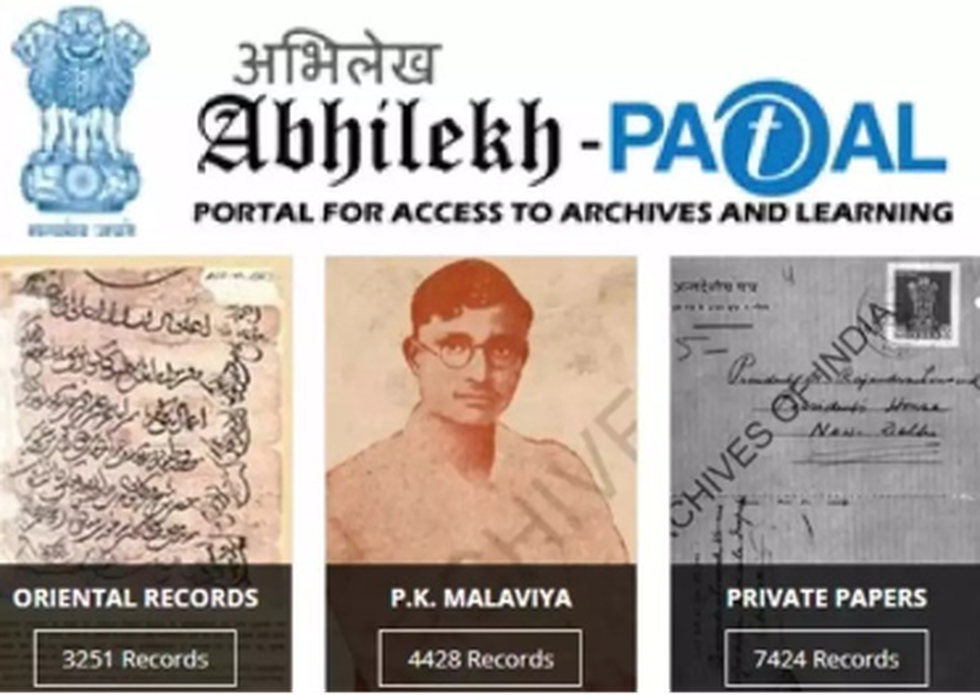
About Abhilekh Patal:
- What it is? It is a full-featured web portal to access the National Archives of India’s reference media and its digitized collections through the Internet.
- Abhilekh is a Sanskrit term used in India for records since ancient times and Patalis a Sanskrit word meaning a board, platform, or surface.
- A combination of both these words has been adopted as an acronym for Portal for Access to Archives and Learning.
Key facts about the National Archives of India
- It was established on 11 March 1891 at Calcutta (Kolkata) as the Imperial Record Department, it is the biggest archival repository in South Asia.
- It is the repository of the non-current records of the Government of India and is holding them in trust for the use of record creators and general users.
- It has a vast corpus of records viz., public records, private papers, oriental records, cartographic records and microfilms, which constitute an invaluable source of information for scholars-administrators and users of archives.
- It is Located at the heart of New Delhi
- It has one Regional Office in Bhopal and three Records Centres at Bhubaneswar, Jaipur and Puducherry.
- Nodal Ministry: It is an Attached Office of the Ministry of Culture, Government of India.
6. Economic Advisory Council to the Prime Minister
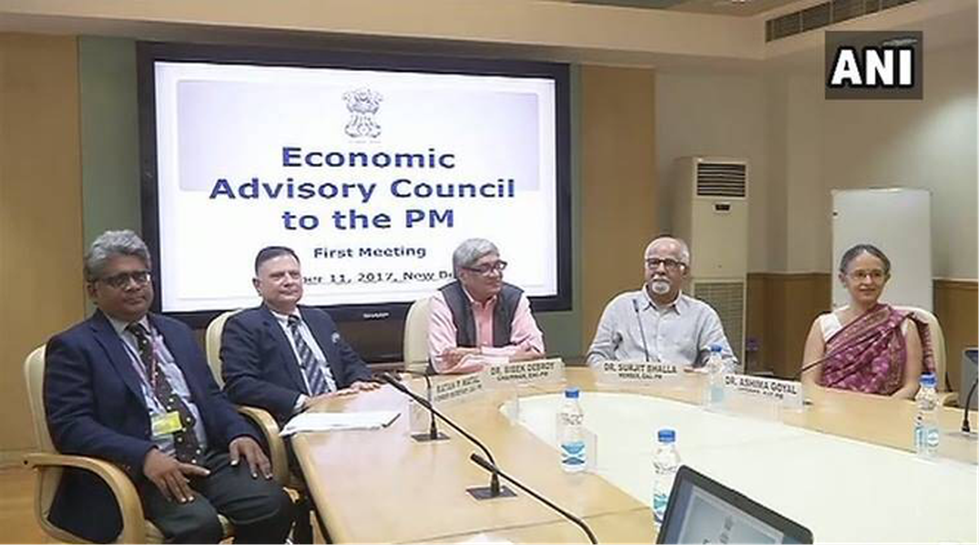
About Economic Advisory Council to the Prime Minister (EAC-PM):
- It is a non-constitutional, non-permanent and independent body constituted to give advice on economic and related issues to the Government of India, specifically to the Prime Minister.
- Terms of Reference:
- Analyzing any issue, economic or otherwise, referred to it by the Prime Minister and advising him thereon, addressing issues of macroeconomic importance and presenting views thereon to the Prime Minister.
- These could be either suo-motu or on reference from the Prime Minister or anyone else.
- They also include attending to any other task as may be desired by the Prime Minister from time to time.
- It was set up for the first time in September 2017 with a term of two years.
- Composition:
- EAC-PM is headed by a Chairperson and consists of eminent economists as members.
- It is supported in its functions by a team of officials and administrators.
- There is no fixed definition on the exact number of members and staff of the PMEAC.
- It is common for the Council to be reconstituted time and again with different organizational structures headed by various economists who are of recognized international eminence.
- For administrative, logistic, planning and budgeting purposes, the NITI Aayog serves as the Nodal Agency for the EAC-PM.
7. Who are Vault Managers?

About Vault Managers:
- The vault manager is regulated as a SEBI intermediary for providing vaulting services meant for gold deposited to create electronic gold receipts (EGRs).
- Obligations of the vault manager: Accepting deposits, storage, and safekeeping of gold, creation as well as withdrawal of EGR, grievance redressal, and periodic reconciliation of physical gold with the records of the depository.
- Registering as a Vault Manager:
- Any person intending to carry on the business as a vault manager can make an application to SEBI for a grant of a certificate of registration.
- The applicant shall be a body corporate incorporated in India and shall have a minimum net worth of Rs 50 crore.
- Every certificate of registration granted will be valid unless it is suspended or cancelled by SEBI.
- Regulations:
- The vault managers are required to have systems for recording all transactions in electronic form pertaining to vaulting services.
- They need to maintain the documents to ensure that gold is traceable; details of storage, transfer and withdrawal of gold; purity, quantity and weight of deposited gold; and creation and extinguishment of EGRs.
- They need to preserve these records and documents for a minimum period of five years.
- They need to abide by the code of conduct specified by the regulator.
- The regulator has the right to undertake an inspection of the books of accounts, records, documents and deposits of gold of the vault manager.
What are Electronic Gold Receipts (EGRs)?
- EGRs are a form of depository gold receipts that can be traded on stock exchanges.
- EGR is an electronic receipt issued by the Vault Manager against the gold deposited with them.
- It can be sold and bought in the same way stocks are sold and bought from stock exchanges.
- Creation of EGR:
- Any person desirous of creating EGRs will have to place a request for the deposit of the gold with the registered vault manager.
- The vault manager will ensure compliance with the gold standard, weigh the gold bars and check necessary documentation at the time of deposit of gold.
- The vault manager or any person authorised on this behalf will ensure that the gold is deposited only through an accredited refinery or a nominated agency.
- Every vault manager will have a common interface with the depository for the creation and extinguishment of EGR.
- Upon acceptance of the gold from the depositor, the vault manager will create an EGR in the name of such depositor as a beneficial owner by entering details in the common interface.
- Withdrawal of Gold:
- The beneficial owner seeking to withdraw gold from the vault will have to place a request with the depository.
- The depository, after satisfying the payment of charges due to the vault manager, will intimate its approval for the withdrawal of gold to the concerned vault manager.
- Upon receipt of communication from the depository, the vault manager will hand over the gold and extinguish the EGRs.
8. What is the Unmanned Aerial Vehicle (UAV) 'Nagastra'?
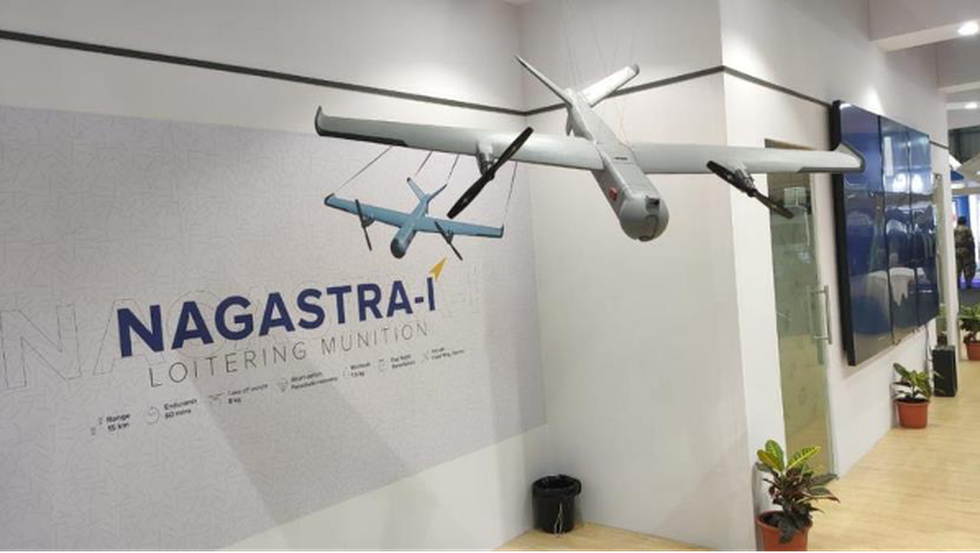
About Nagastra:
- It is India's first indigenous loitering munition which can strike enemy targets with precision.
- It has been designed and developed by Economics Explosives Ltd (EEL), a 100 per cent subsidiary of Solar Industries Nagpur, in association with Z-Motion, Bangalore.
- It has an indigenous content of more than 75 per cent.
- Features:
- It can neutralize any hostile threat with GPS-enabled precision strikes with an accuracy of 2 m.
- It has an endurance of 60 min with a man-in-loop range of 15 km and an autonomous mode range of 30 km.
- In addition to day-night surveillance cameras, it is equipped with fragmenting warhead to defeat soft-skin targets.
- In case a target is not detected or if the mission is aborted, the loiter munition can be called back and made a soft landing with a parachute recovery mechanism, enabling it to be reused multiple times.
- Why is it called a loitering munition?
- The Nagastra can loiter around in the air and strike when the target reaches the spot.
- It hits in a kamikaze mode (suicidal attack), destroying the target and itself.
9. What is World Earth Day?

About World Earth Day:
- It is an annual event celebrated on April 22 to raise awareness about environmental issues and promote global efforts to protect the Earth's natural resources.
- History:
- The first World Earth Day was held on April 22, 1970, in the United States.
- It was organized by a group of environmental activists led by US Senator Gaylord Nelson, who was concerned about the negative impact of industrialization and pollution on the environment.
- Since then, it has become a global movement that encourages individuals and communities to take action towards protecting our planet.
- The Earth Day 2023 theme: " Invest In Our Planet", is a continuation of the 2022 theme.
What is Earth Hour?
- It is a global grassroots movement uniting people to take action on environmental issues and protect the planet.
- It is organized by World Wildlife Fund (WWF).
- It was started by WWF and partners as a symbolic lights-out event in Sydney in 2007.
- It takes place on the last Saturday of March every year.
- “Earth Hour” encourages people to switch off all lights for an hour, from 8:30 pm to 9:30 pm local time to promote awareness of climate change challenges and energy conservation.
- This symbolic act, known as the ‘lights off’ moment, unites people worldwide in a show of support for the planet and serves as a reminder of the environmental issues facing us.
10. What is Forensic Auditing?
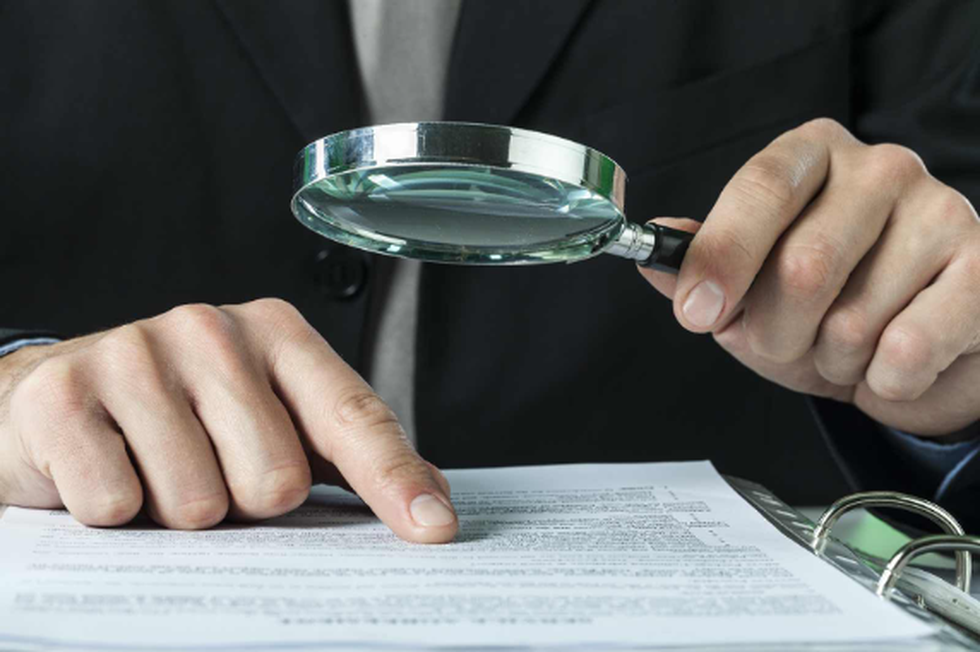
About Forensic Auditing:
- What is it? It is an analysis and review of the financial records of a company or person to extract facts which can be used in a court of law.
- It is a speciality in the accounting industry, and most major accounting firms have a department of forensic auditing.
- Forensic audits require accounting and auditing procedures and expert knowledge about the legal framework of such an audit.
- Why Forensic Auditing? A forensic audit is often conducted to prosecute a party for fraud, embezzlement, or other financial crimes.
- In the process of a forensic audit, the auditor may be called to serve as an expert witness during trial proceedings.
- Forensic audits could also involve situations that do not include financial fraud, such as disputes related to bankruptcy filings, business closures, and divorces.
- The forensic audit process is similar to a traditional financial audit — planning, gathering evidence, and writing a report — with the additional step of a possible appearance in court.
- Forensic audit vs Internal audit:
- Forensic auditing is “an examination of financial records to find any illegal financial activity,” while an internal audit is defined as “an examination of a company's accounts or activities by its own accountants or managers.”
Key facts about National Stock Exchange of India Limited (NSE):
- It is India's leading financial exchange, with headquarters in Mumbai.
- It was incorporated in 1992 and, since then, has evolved into an advanced, automated, electronic system offering trading facilities to investors across the country.
- It was set up by an assembly of leading financial institutions at the recommendations formulated by Pherwani Committee.
- In 2021, this exchange system ranked fourth in the world according to the metric of its trading volume.
- Currently, NSE conducts transactions in the wholesale debt, equity, and derivative markets.
- One of the more popular offerings is the NIFTY 50 Index, which tracks the largest assets in the Indian equity market.


.jpg)

.jpg)
























































































































































.png)
.png)
.png)
.png)
.png)


.png)
.png)
.png)





.png)
.png)






.png)
.png)
.png)
.png)
.png)
.png)
.png)
.png)
.png)

.png)







.png)
.png)


.png)
.png)
.png)


.png)

.png)
.png)





.jpg)

.png)
.png)


.png)

.png)
.png)
.png)

.jpg)

.jpg)


.png)

.png)
.png)
.png)
.png)
.png)
.png)
.png)
.png)
.png)
.png)




.png)

.png)





.png)
.png)
.png)
.png)
.png)
.png)
.png)
.png)
.png)
.png)
.jpg)
.jpg)

.png)
.png)
.png)
.png)
.png)
.png)
.png)
.png)
.png)
.png)
.png)
.png)
.png)
.png)
.png)
.png)
.png)
.png)
.png)
.png)
.png)
.png)



.png)
.png)

.jpg)
.jpg)


.jpg)
.jpg)
.jpg)
.jpg)
.jpg)

.jpg)








.jpg)
.jpg)
.jpg)
















.jpg)
.jpg)







.jpg)


















.jpg)
.jpg)






























































































.jpg)
.jpg)


























.jpg)

.jpg)










.jpg)








.jpg)




.jpg)










.jpg)


















.jpg)












































.jpg)














.jpg)
.jpg)
.jpg)





.jpg)

.jpg)
.jpg)





































































.jpg)


































.jpg)
.jpg)
















































.jpg)












.jpg)


.jpg)




.jpg)
.jpg)
.jpg)

.jpg)
.jpg)
.jpg)
.jpg)

.jpg)
.jpg)
.jpg)

.jpg)
.jpg)
.jpg)
.jpg)
.jpg)
.jpg)
.jpg)
.jpg)

.jpg)


.jpg)
.jpg)
.jpg)
.jpg)
.jpg)
.jpg)
.jpg)
.jpg)
.jpg)
.jpg)











.jpg)
.jpg)





.jpg)
.jpg)
.jpg)
























.jpg)
























.jpg)









.jpg)
.jpg)







.jpg)
.jpg)









































.jpg)
.jpg)
.jpg)
.jpg)
.jpg)

.jpg)
.jpg)
.jpg)
.jpg)
.jpg)


.jpg)
.jpg)
.jpg)
.jpg)
.jpg)

.jpg)
.jpg)
.jpg)
.jpg)
.jpg)
.jpg)
.jpg)
.jpg)
.jpg)
.jpg)
.png)

.png)
.png)

.png)
.png)
.png)
.png)


.jpg)
.jpg)

.jpg)
.jpg)
.jpg)

.png)
.png)
.png)
.png)
.png)
.png)
.png)

.png)
.png)
.png)
.png)
.png)
.png)
.png)
.png)
.png)
.png)





































































-min.png)



.png)




.png)








































